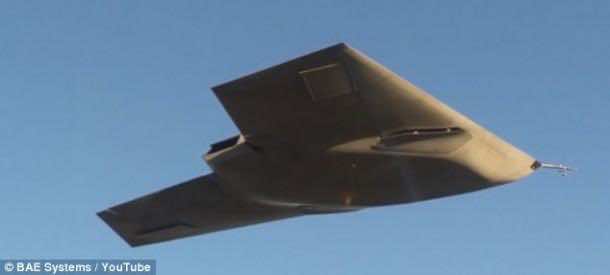Britain’s military has performed the first test flight of its next-generation drone. Taranis, named after the Celtic God of thunder, has ‘surpassed all expectation’ after its initial test flight.
The single-wing stealth design drone has been designed to fly faster than the speed of sound and remain undetected by enemy radar. Made by BAE Systems, the drone took flight for the first time in August 2013, but video of its flight has only recently been released. The drone took off, rotated, climbed and landed at various speeds and altitudes. Taranis is the largest drone built by BAE Systems and the most advanced aircraft developed by British engineers. It is the result of a total of 1.5 million work hours and £185 million of funding.
The drone is around the same size as a Hawk fighter jet. The new technologies displayed by Taranis are believed to be paving the way for a powerful new generation of drones capable of carrying deadly payloads from bases in Britain. But many experts have called for a ban on autonomous technologies as they believe that many of the machines we create could wage war on humans in a worst-case scenario. Current air drones are remotely piloted by aircrews, but Taranis uses on-board computers and sensors to pave its own flight path, deal with obstacles, avoid threats and target enemies. The only time it seeks human authorization is before attacking an enemy target.
Britain claims that Taranis will spearhead the fight against terror in Africa. Taranis is the ultimate example of what engineers can achieve when they are given enough time and resources. Many view it as a dangerous machine, but it is in fact an amazing piece of engineering.





